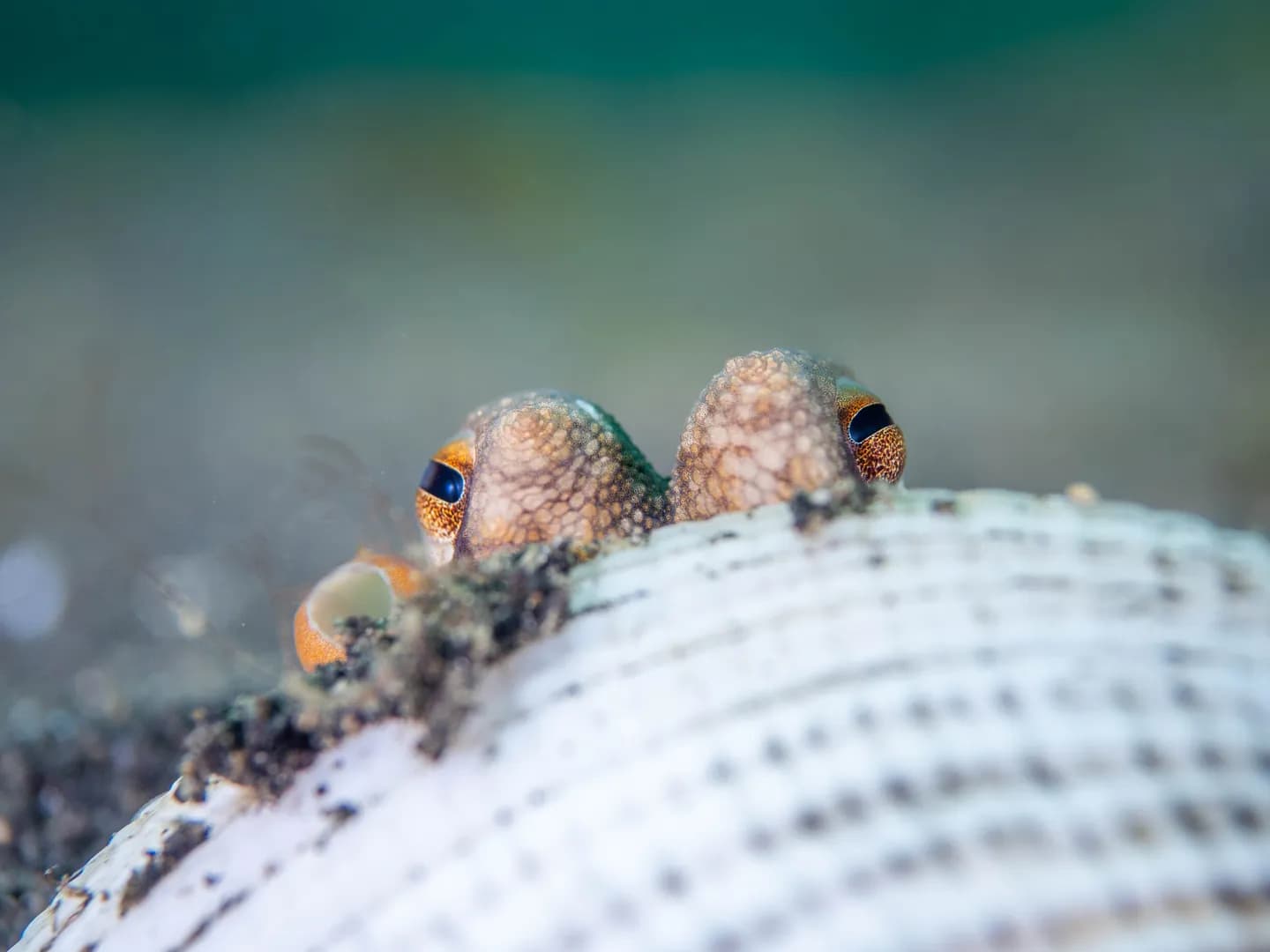Tiny Treasures: Discover the Nudibranchs of North Sulawesi

Nudibranchs are soft-bodied marine gastropods, or sea slugs, known for their dazzling colors and extraordinary diversity. Combined with their slow movement, this makes them a favorite subject for underwater macro photographers.
North Sulawesi is home to around 350 recognized species of nudi, with more being documented all the time. In July 2025, two new species – named Phyllidia ovata and Phyllidia fontjei – were discovered here. The latter was named in honor of Dr. Fontje Kaligis, a senior Indonesian researcher who leads an international collaboration to deepen our knowledge and appreciation of marine biodiversity, particularly in North Sulawesi.
With that spirit of exploration in mind, let’s take a closer look at some of the nudibranchs that call Lembeh their home. From cannibal critters and chemical weapons experts to mimics and solar-powered slugs, nudibranchs are weird, wonderful, and always full of surprises. In this article, we feature seven of our favorite species, which we often spot near Lembeh Resort.
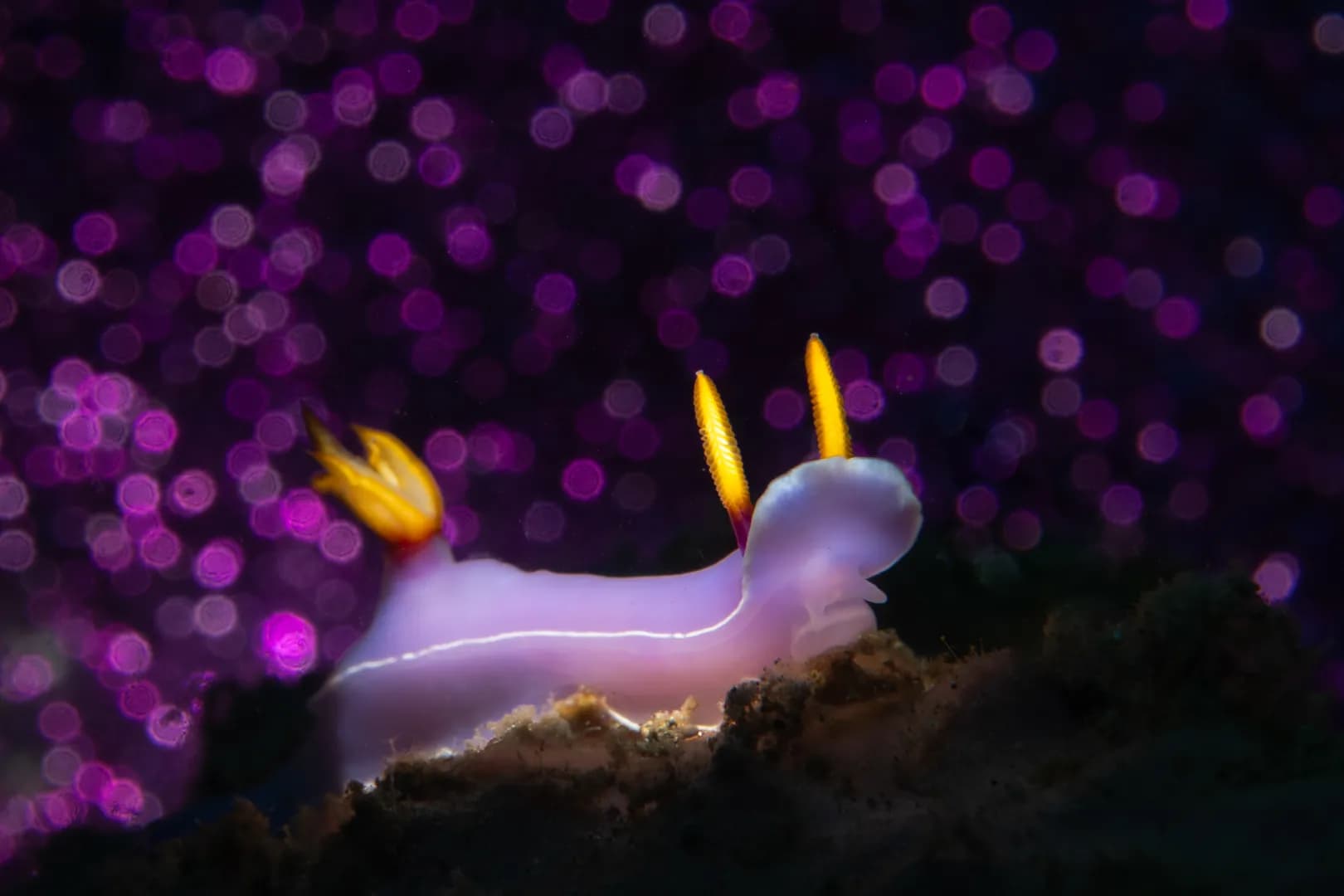
1. Hypselodoris apolegma
First up, a real showstopper. Sporting vivid purple and magenta hues with a frilly white gill plume, Hypselodoris apolegma is the glamorous fashionista of the nudibranch world. This species is known for its vibrant warning colors, which advertise its unpalatability to predators. It feeds on sponges, absorbing toxic compounds which help it stay safe in plain sight.
Hypselodoris apolegma are often spotted in pairs, sometimes trailing one another in a ‘mating train’. Like other nudibranchs, bubblegum worm nudis are hermaphrodites and can mate with any adult of the same species.
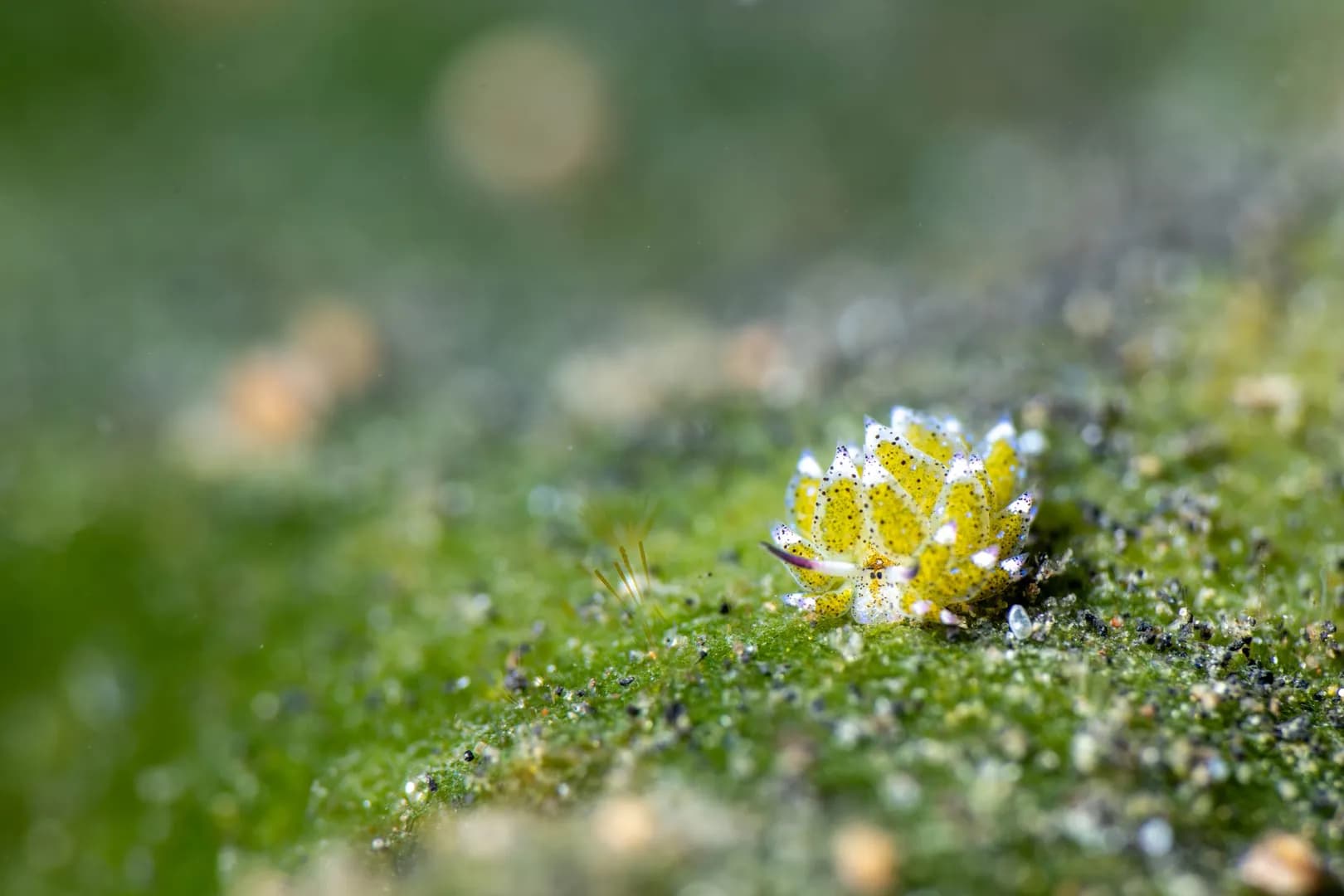
2. Costasiella kuroshimae (Shaun the Sheep)
First up, a real showstopper. Sporting vivid purple and magenta hues with a frilly white gill plume, Hypselodoris apolegma is the glamorous fashionista of the nudibranch world. This species is known for its vibrant warning colors, which advertise its unpalatability to predators. It feeds on sponges, absorbing toxic compounds which help it stay safe in plain sight.
Hypselodoris apolegma are often spotted in pairs, sometimes trailing one another in a ‘mating train’. Like other nudibranchs, bubblegum worm nudis are hermaphrodites and can mate with any adult of the same species.
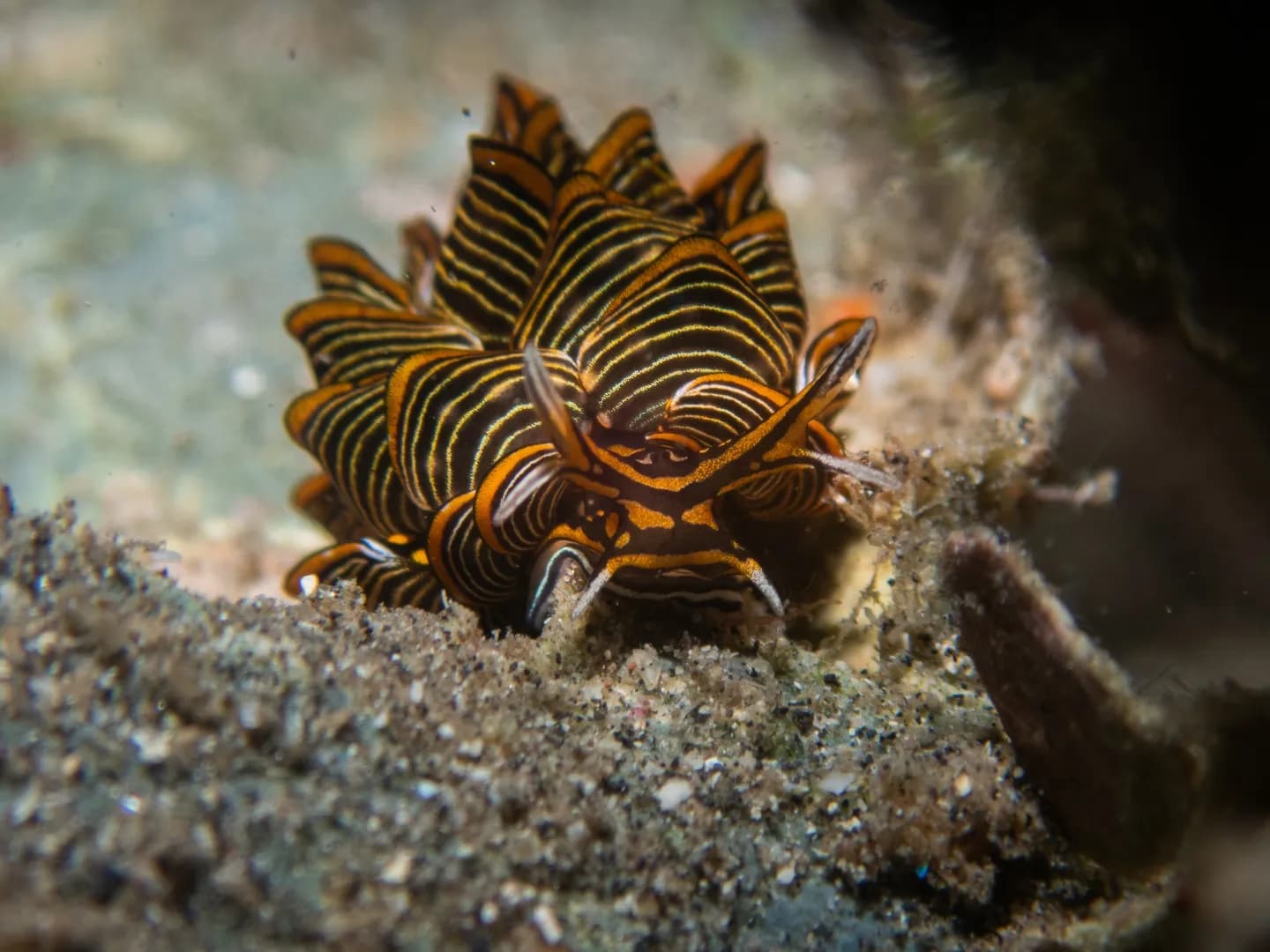
3. Cyerce nigra (Tiger Butterfly Sea Slug)
Another sacoglossam we couldn’t resist including here is the tiger butterfly nudibranch – a sea slug that is as rare as it is beautiful. With its orange coloration and delicate, petal-like cerata, Cyerce nigra moves gracefully across the substrate like a miniature underwater butterfly. Those mesmerizing cerata are not just for show—they break off easily when threatened, distracting predators and allowing the nudi to escape.
Like Shaun the sheep, it feeds on algae and retains chloroplasts from its meals within its body. This allows Cyerce nigra to take a portion of its energy direct from sunlight. So this shape-shifting tiger-butterfly is also a solar-powered slug!
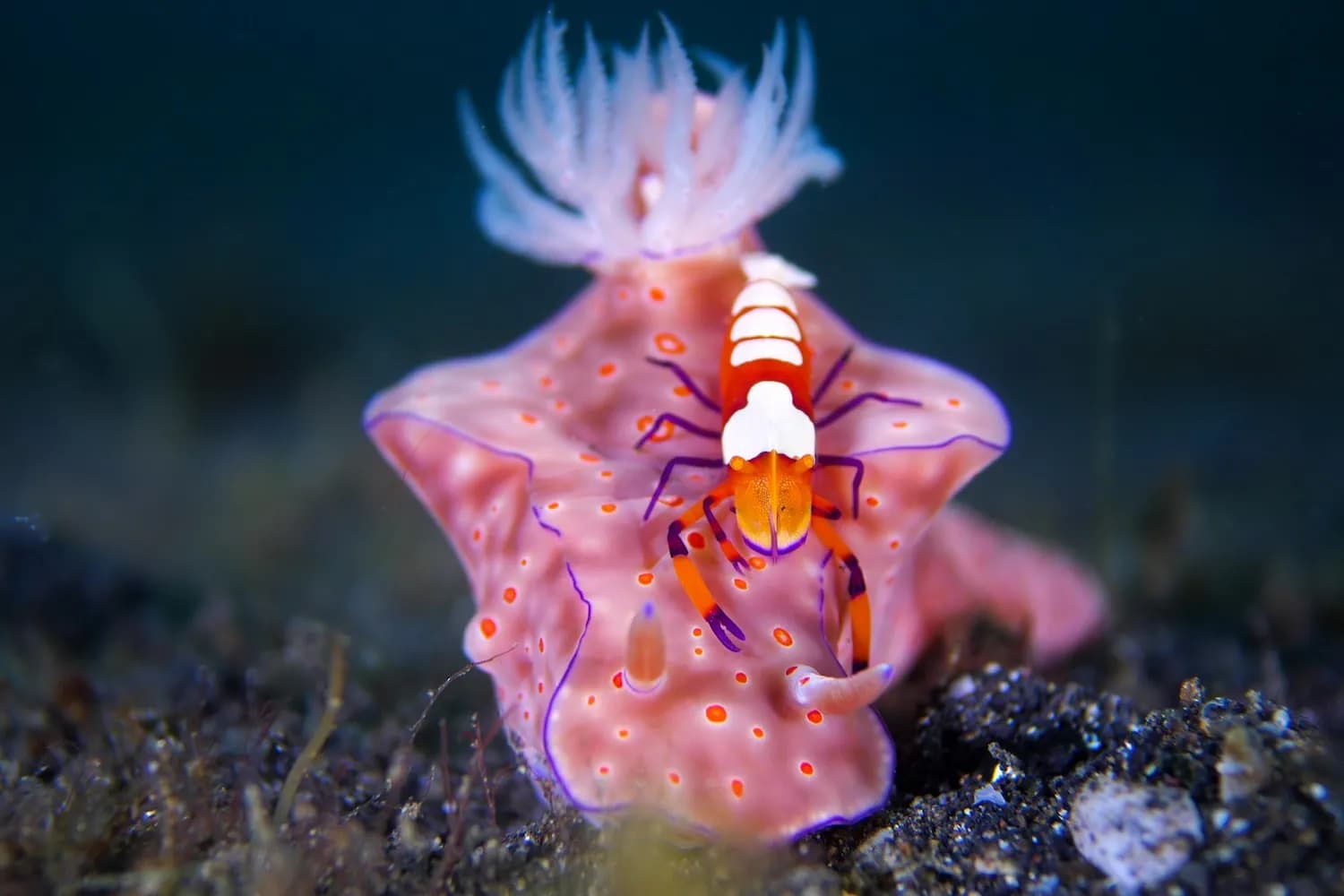
4. Ceratosoma trilobatum (T-bar Nudibranch)
With its rounded lobes and a distinctive “T” shape just behind the gills, Ceratosoma trilobatum is a master of mimicry. Its shape and coloration closely resemble sponge colonies, which helps it avoid detection while it feeds—also on sponges. This species also has a chemical antenna at the rear end that emits noxious secretions when threatened.
When muck diving in Lembeh, we sometimes see small emperor shrimp hitching a ride on t-bar nudibranchs (like in the photo above). This is an example of commensalism in nature – similar to symbiosis, but when one partner disproportionately benefits (and the other is largely unaffected). The shrimp gets a free ride between feeding grounds and some added protection, while the nudi may also benefit slightly from the shrimp’s cleaning services.
For divers in Lembeh, the benefits of this partnership are even clearer – photographers with a keen eye get two critters for the price of one!
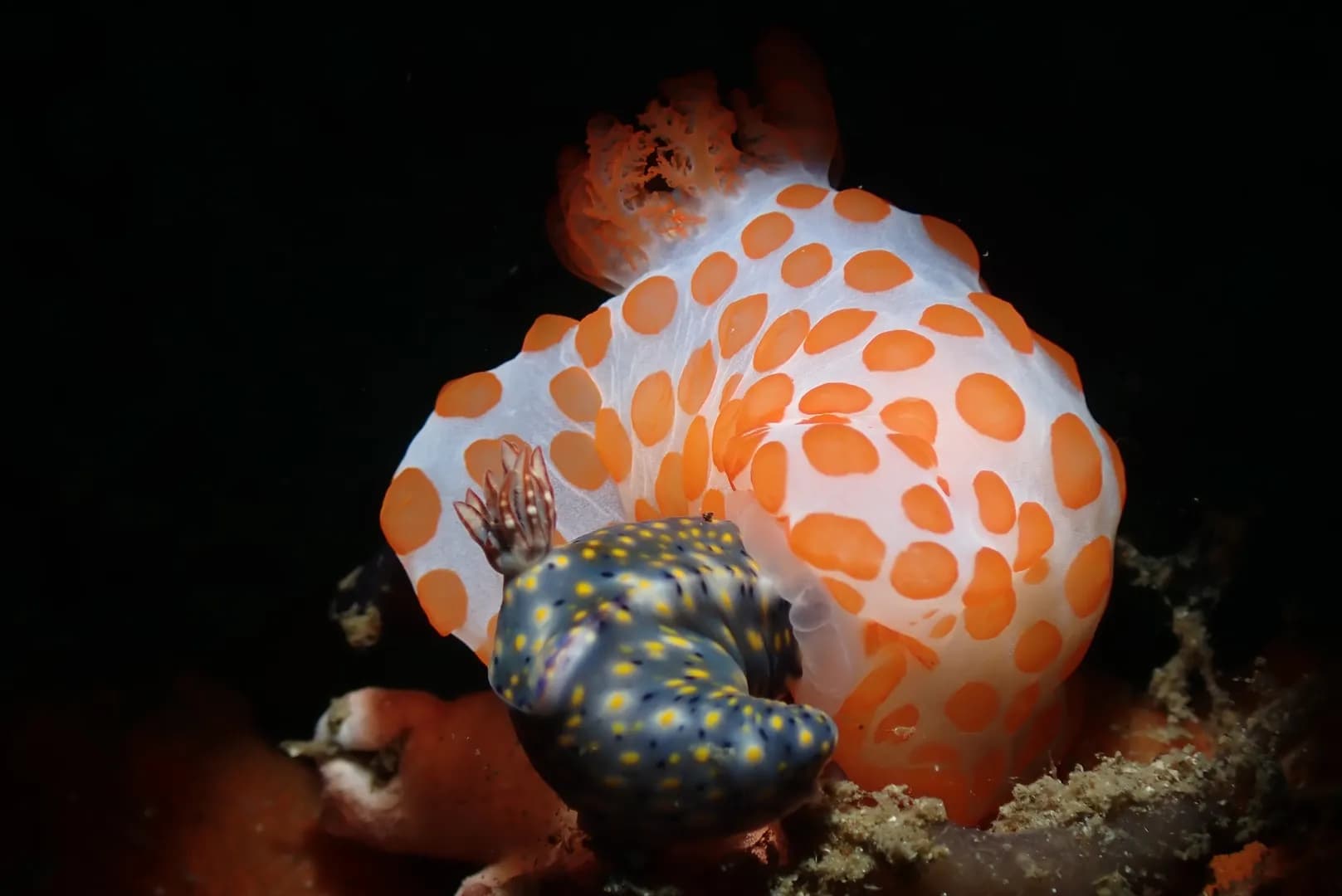
5. Gymnodoris (Cannibal nudibranch)
Unlike most nudibranchs, which graze on sessile prey such as sponges or hydroids, Gymnodoris species are active predators, often preying on other nudibranchs – including members of their own species. This behavior has earned them the nickname ‘cannibal nudibranchs.’
In the Lembeh Strait, we sometimes see Gymnodoris moving surprisingly quickly across the substrate in pursuit of other, slower-moving sea slugs. Instead of relying solely on vision, they use chemosensory organs to detect chemical trails left behind by potential prey, allowing them to home in on hidden nudibranchs.
Once they catch up with their quarry, Gymnodoris also have a flexible stomach which they can expand dramatically, enabling them to swallow prey nearly as large as themselves whole. By feeding on other nudibranchs, Gymnodoris species may help regulate nudibranch populations, influencing the balance and diversity of the ecosystem.
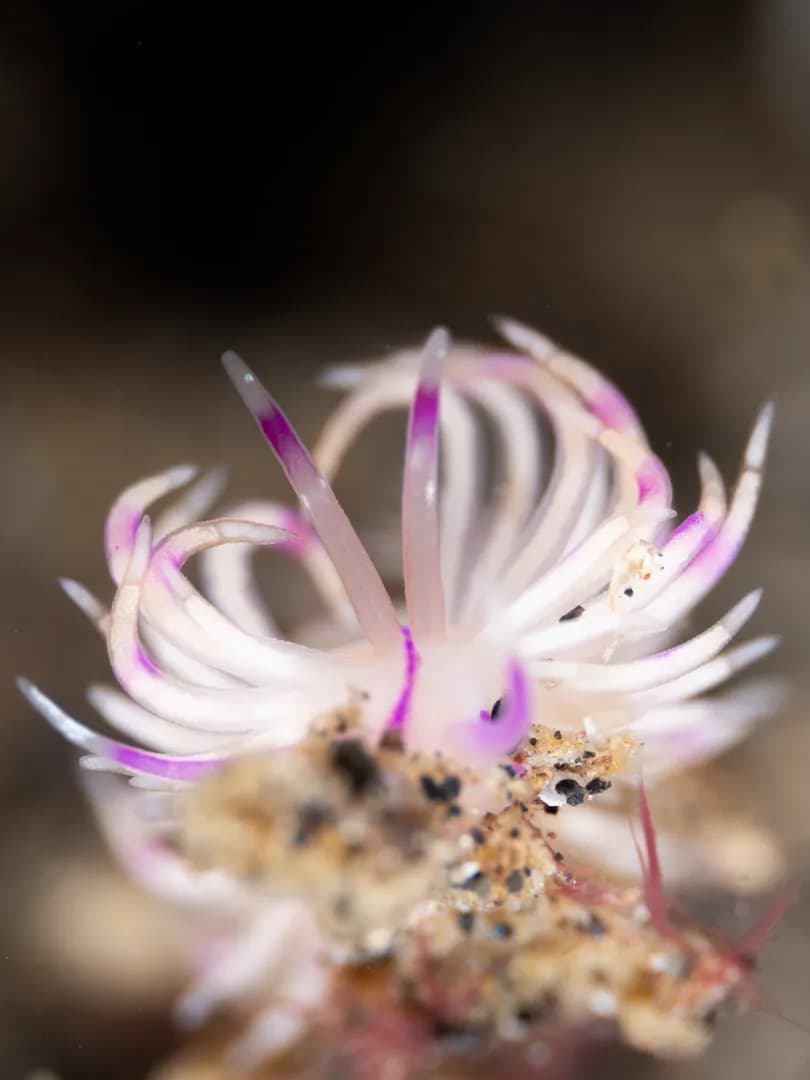
6. Sakuraeolis sp. (Cherry blossom nudibranch)
Named after cherry blossoms (sakura), Sakuraeolis species are dainty aeolids with pinkish or translucent bodies and delicate cerata. Though they look fragile, this floral nudi species is a specialized predator—often feeding on hydroids, from which they harvest stinging cells (nematocysts) for their own defense.
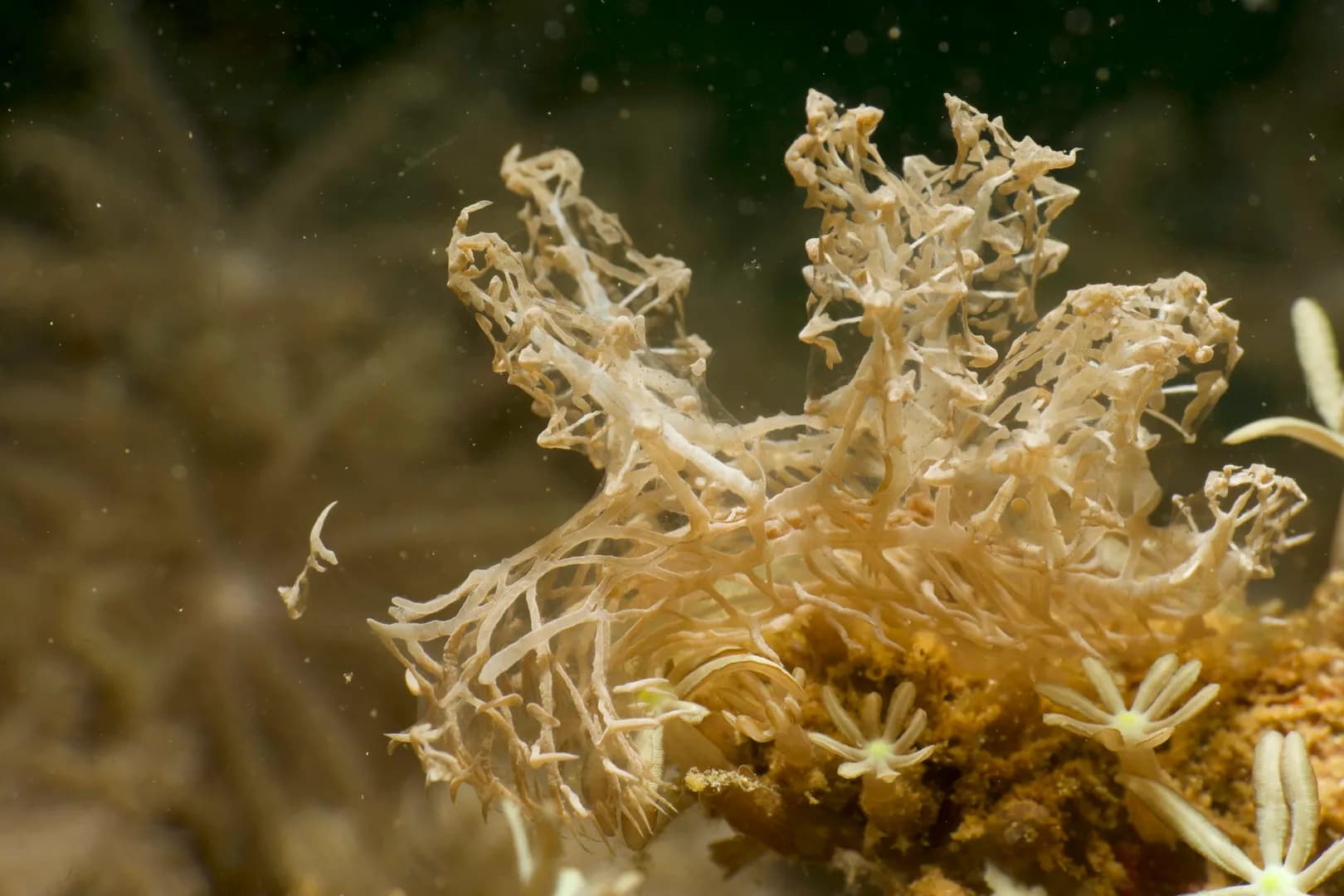
7. Melibe colemani (Ghost Nudi)
Last but certainly not least, Melibe colemani is an elusive and ethereal resident of North Sulawesi, and a holy grail species for many underwater macro photographers. With its transparent body and frilly appendages, it blends perfectly into the muck and rubble habitats of Lembeh, and looks more like a tiny frond of seaweed than a sea slug. Instead of a radula, it has a large oral hood, which it uses like a net to scoop up tiny prey from the substrate—making it one of the most unique hunters in the nudibranch family.
The ghost nudibranch is rare indeed. But it has been spotted recently on the reefs of nearby Bangka island. If Melibe colemani is top of your nudi wishlist, we will be happy to arrange a trip in search of it for you.
Want to learn more about the weird and wonderful nudibranchs of North Sulawesi? We have seven more species for you in this blog. You can also search for more information on specific species via our Critter Log.
Discover Nudibranchs and More at Lembeh Resort
Of the 350 known species of nudibranch currently living in North Sulawesi, it’s estimated that around 100 are still waiting to be formally described by science – just like Phyllidia ovata and Phyllidia fontjei. Who knows, after your next dive trip to Lembeh Resort, the next nudibranch discovery could be named after you!
At Lembeh Resort, our team of skilled dive guides will help you find and identify a whole range of critters, including nudibranchs. Plus, with the region’s only Backscatter-Authorized Photo Center and a resident photo pro on hand to give you hints and tips, we can help you capture amazing images of these colorful and captivating critters.
If you have a question about diving, accommodation, photography, or anything else related to diving holidays in North Sulawesi, please get in touch. Our team will be happy to help.

